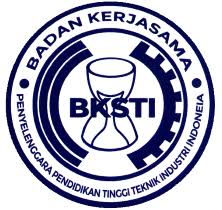Usulan Pengendalian Kualitas Produksi Benang Carded dengan Metode Six Sigma
DOI:
https://doi.org/10.30656/intech.v4i1.856Keywords:
FMEA, Quality Control, Six SigmaAbstract
A yarn company strives to produce good and quality products, but the production process that is carried out by each person will produce products targeted at a target that has been set at 5%. This study uses the Six Sigma method but only until the improvement stage. The research is to determine the DPMO value and sigma level in the spinning production process, to know what factors cause defects and new parameters to reduce the defect. Based on the results of the study that the DPMO on the type of CD thread in the spinning section is 17,130 and the sigma level is 3,6. The level of sigma that has dominated the Indonesian industry average, but has a defect of 8.7%, the target set at 5%. Damaged and dirty apron, clogged trumpet, and leaky hose are factors that plan defects. Furthermore, with Failure Mode Effect Analysis (FMEA), the highest value of Risk Priority Number (RPN) in tangled defects is that the apron is damaged (140) and clogged trumpet (120), while the highest RPN value is gross dirty, i.e., dirty apron (150) and hose leaking lubricant (120).
Downloads
References
Das, P., Roy, S., & Antony, J. (2007). An application of six sigma methodology to reduce lot-to-lot shade variation of linen fabrics. Journal of Industrial Textiles, 36(3), 227–251.
Gaspersz, V. (2002). Pedoman implementasi program six sigma terintegrasi dengan ISO 9001: 2000, MBNQA, dan HACCP. Jakarta :PT. Gramedia Pustaka Utama.
Gupta, N., & Bharti, P. K. (2013). Implementation of Six Sigma for minimizing the defects rate at a yarn manufacturing company. International Journal of Engineering Research and Applications, 3(2), 1000–1011.
Hussain, T., Jamshaid, H., & Sohail, A. (2014). Reducing defects in textile weaving by applying Six Sigma methodology: a case study. International Journal of Six Sigma and Competitive Advantage, 8(2), 95–104.
Sirine, H., & Kurniawati, E. P. (2017). Pengendalian Kualitas Menggunakan Metode Six Sigma (Studi Kasus pada PT Diras Concept Sukoharjo). Asian Journal of Innovation and Entrepreneurship, 2(03), 254–290.
Supriyadi, S., Ramayanti, G., & Roberto, A. C. (2017). Analisis Kualitas Produk dengan Pendekatan Six Sigma. In Prosiding SNTI dan SATELIT 2017 (pp. D7-13). Malang: Jurusan Teknik Industri Universitas Brawijaya.
Supriyadi, S., Ramayanti, G., & Roberto, A. C. (2017, December). Analisis Kualitas Produk dengan Pendekatan Six Sigma. In Prosiding Seminar Nasional Riset Terapan| SENASSET (pp. 7-13).
Zahara, F. (2014). Pengendalian Kualitas Part Trim Rear Quarter Right Apv Arena Dengan Menggunakan Metode Six Sigma Di PT. Suzuki Indomobil Motor. Optimasi Sistem Industri, 13(1), 486–502.









.png)
.png)
.png)



.png)

.png)
